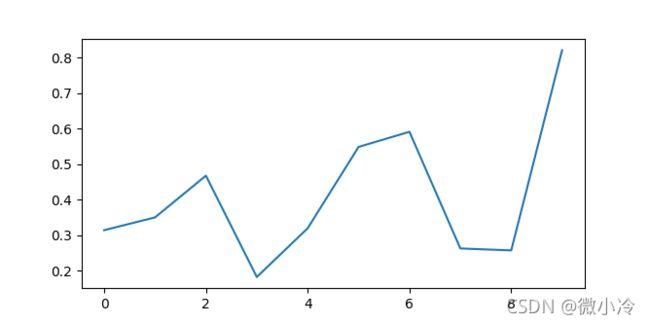从Python新手到高手的68行代码
文章目录
-
-
- 基础入门
- 菜鸟提升
- 基础晋级
- 高手之路
- 内置包库
- 奇技淫巧
-
基础入门
1 python
即在命令行输入python,进入Python的开发环境。
2 x = 1+2*3-4/5+6**2
加减乘除四则混合运算,可以当作计算器用了,其中**表示乘方。
3 print(x)
即输出x的值,如果感觉麻烦,可以直接输入x,然后回车,也能看到x的值。
4 if x>5 : print(x)
简单的判断,如果x>5,则打印x。
5 for i in range(10): print(i)
简单的循环,其中range(10)表示创建一个可迭代的自然序列,range(10)表示0,1,2...10。
6 'hello '+"world"
python中可以用单引号或双引号表示字符串,+可以拼接两个字符串。
7 def addOne(x):return x+1
python中通过def来声明函数,函数名称和函数主体之间用:分隔,声明上式之后可以直接在命令行中调用。
>>> def addOne(x):return x+1
...
>>> addOne(1)
2
8 x = [1,2,'abc',3,2]
python中可通过[]来创建一个列表,列表中的成员可以为任意数据类型。
>>> x = [1,2,'abc',3,2]
>>> x
[1, 2, 'abc', 3, 2]
9 x[0]
python中通过方括号和冒号来进行索引,且索引从0开始。
>>> x[0]
1
10 y = set(x)
set为集合,集合中不允许存在相同的元素,所以将一个列表转成集合之后,会删除列表中的重复元素。
>>> y = set(x)
>>> y
{
1, 2, 3, 'abc'}
菜鸟提升
11 pip install numpy
在命令行中运行pip命令,进行python相关包的安装。安装之后,再运行python进入python环境。
12 import numpy as np
导入numpy包,并给与其np的标识,从而我们可以通过np.的形式来调用numpy中的函数。
13 x = np.arange(10)
生成一个自然序列,与range,但是np.arange得到的可进行运算的数组(array)。
>>> x = np.arange(10)
>>> x
array([0, 1, 2, 3, 4, 5, 6, 7, 8, 9])
14 x**2
没什么好说的,只是演示以下array可以使用运算符。
>>> x**2
array([ 0, 1, 4, 9, 16, 25, 36, 49, 64, 81], dtype=int32)
15 x.tolist()**2
这是一行错误的代码,其中x.tolist()是将x从array转成list。然后再算其平方,然而列表(list)这种数据格式在python中是不能直接进行计算的,所以报了错。
>>> x.tolist()
[0, 1, 2, 3, 4, 5, 6, 7, 8, 9]
>>> x.tolist()**2
Traceback (most recent call last):
File "" , line 1, in <module>
TypeError: unsupported operand type(s) for ** or pow(): 'list' and 'int'
16-18
>>> if len(x)==5:print(x)
... elif len(x)==10: print(x.tolist()+x)
... else: print(x[0])
...
[ 0 2 4 6 8 10 12 14 16 18]
len表示获取x的长度,python中通过==来判断二者是否相等。上式表示,如果x的长度等于5,则打印x;或者x的长度为10,则打印x.tolist()+x;如果x的长度为其他值,则打印x[0]。
由于x的长度是10,所以执行了第2行代码。而且我们发现,python非常智能地按照array的规则计算了x.tolist()+x。这说明,当表达式中同时存在array和list的时候,python会自动将list转为array。
19-20
>>> d = {
"a":1,"b":2,"c":3}
>>> d["a"]
1
d即为字典,可通过键值对的形式进行索引。案例中,"a","b","c"为键(key),1,2,3为值(value),通过key来索引value,非常便利。
基础晋级
21 a = 1,2,3
逗号分隔的变量会默认组成元组,元组会根据等号左边变量的个数来进行赋值。
>>> a = 1,2,3
>>> a
(1, 2, 3)
22 a,b = 1,2
元组可以通过元素对应的位置来进行一一赋值,由此而带来的便利就是可以更快速地交换两个变量的值。
>>> a,b = 1,2
>>> a
1
>>> b
2
>>> b,a = a,b
>>> b
1
>>> a
2
23 print(f"a={a}")
在python中,字符串前面可有四种前缀,其中f代表字符串格式化,即format,在f字符串中,大括号内部会自动转换为变量。
>>> print(f"a={
a}")
a=2
24 a = False if a==2 else True
在Python中,False和True为bool型的两个值。
在python中,可通过if...else构成三元表达式,上式可等价为响应的C语言a = a==2 ? 0 : 1。
>>> a = False if a==2 else True
>>> a
False
25 x = [i for i in range(10)]
在python中,可通过for循环来创建元组、列表以及字典。
>>> x = [i for i in range(10)]
>>> x
[0, 1, 2, 3, 4, 5, 6, 7, 8, 9]
26-30
def fac(n):
if n == 0:
return 1
else:
return n*fac(n-1)
这是一个阶乘算法。在pyhton中,代码块以空格的形式存在。
高手之路
31 fac = lambda n : 1 if n==0 else n*fac(n-1)
这同样是一个阶乘算法,与26-30表示的是同一个函数。此即lambda表达式,可以更加方便地创建函数。
32 op = {"add":lambda a,b:a+b, "minus":lambda a,b:a-b}
Python中没有switch..case表达式,而字典+lambda表达式可以弥补这一点。上式中,op["add"]表示调用函数lambda a,b:a+b,即加法;op["minus"]表示调用函数lambda a,b:a-b,即减法。
正因lambda表达式并不需要命名,所以也称匿名函数。
>>> op = {
"add":lambda a,b:a+b, "minus":lambda a,b:a-b}
>>> op["add"](3,4)
7
>>> op["minus"](3,4)
-1
33-34
while a<5:a+=1
else: print(f"a={
a}")
while循环大家都十分了解,即当a<5时执行a+=1的程序。else表示当a<5不满足时执行的代码。
>>> while a<5:a+=1
... else: print(f"a={
a}")
...
a=5
35-37
xs = []
for x in range(10): xs.append(x)
else : print(xs)
和while..else相似,for也有和else的组合,其语义也很雷同,表示当执行完for循环之后执行else的语句。
>>> xs = []
>>> for x in range(10): xs.append(x)
... else : print(xs)
...
[0, 1, 2, 3, 4, 5, 6, 7, 8, 9]
38-40
from matplotlib import pyplot as plt
plt.plot(np.random.rand(10))
plt.show()
from...import表示从matplotlib中导入pyplot。matplotlib是python中最常用的画图包,功能非常强大。
plt.plot是最常用的绘图函数。python在执行绘图函数之后,会将图片放入内存,当使用plt.show()之后,才会将其显示到屏幕上。
>>> from matplotlib import pyplot as plt
>>> plt.plot(np.random.rand(10))
[<matplotlib.lines.Line2D object at 0x00000232FA511B10>]
>>> plt.show()
41-48
class person:
def __init__(self,name):
self.name = name
def selfIntro(self):
print(f"my Name is {
self.name}")
@staticmethod
def say(string):
print(string)
尽管python主打函数式,但在python中,一切皆对象。而class则可以声明一个类。
在类中,通过self来声明类成员,类似有些语言中的this.。
__init__为python内置的初始化函数,在类实例化之后,会首先运行这个函数。
@staticmethod为静态类标识,静态类可以不经实例而使用。
>>> class person:
... def __init__(self,name):
... self.name = name
... def selfIntro(self):
... print(f"my Name is {
self.name}")
... @staticmethod
... def say(string):
... print(string)
...
>>> person.say("hello")
hello
>>> person.selfIntro()
Traceback (most recent call last):
File "" , line 1, in <module>
TypeError: person.selfIntro() missing 1 required positional argument: 'self'
>>> Li = person("Li")
>>> Li.selfIntro()
my Name is Li
>>>
49 xs=[i for i in range(10) if i%2==0]
通过推导式来快速通过筛选来创建列表。
>>> xs=[i for i in range(10) if i%2==0]
>>> xs
[0, 2, 4, 6, 8]
50 d = dict([[1,2],[4,5],[6,7]])
通过dict可将列表转为字典,前提是列表中的元素必须为二元组。
>>> d = dict([[1,2],[4,5],[6,7]])
>>> d
{
1: 2, 4: 5, 6: 7}
内置包库
51 time.time()
当然前提是要导入import time,这其实是个很常用的函数,以时间戳的形式返回当前的时间。
>>> import time
>>> time.time()
1634558595.5172253
52 calendar.prmonth(2021,10)
可打印日历。。。
>>> import calendar
>>> calendar.prmonth(2021,10)
October 2021
Mo Tu We Th Fr Sa Su
1 2 3
4 5 6 7 8 9 10
11 12 13 14 15 16 17
18 19 20 21 22 23 24
25 26 27 28 29 30 31
>>>
53 os.listdir(r"c:\Windows")
可返回文件夹内部的文件和子文件夹。其中r标识字符串中的\不用于转义。
>>> import os
>>> os.listdir(r"c:\Windows")
['addins', 'appcompat', 'apppatch', 'AppReadiness', 'assembly', 'bcastdvr', 'bfsvc.exe', ...
54 glob.glob(r"c:\Windows\*.ini")
可通过通配符返回文件夹内部的文件。
>>> import glob
>>> glob.glob(r"c:\Windows\*.exe")
['c:\\Windows\\bfsvc.exe', 'c:\\Windows\\explorer.exe', 'c:\\Windows\\HelpPane.exe', 'c:\\Windows\\hh.exe', 'c:\\Windows\\notepad.exe', 'c:\\Windows\\py.exe', 'c:\\Windows\\pyw.exe', 'c:\\Windows\\regedit.exe', 'c:\\Windows\\splwow64.exe', 'c:\\Windows\\Wiainst64.exe', 'c:\\Windows\\winhlp32.exe', 'c:\\Windows\\write.exe']
>>>
55-56 urllib
response = urllib.request.urlopen('https://blog.csdn.net/')
html = response.read()
urllib是python内置的http解析请求库,是大多数爬虫学习者接触的第一个工具。
其中,read()用于读取网页数据,当然,得到的网页数据是未解码数据。
import urllib.request
response = urllib.request.urlopen('https://blog.csdn.net/')
html = response.read()
57-58 正则表达式re
content = html.decode('utf-8')
cn = re.findall(r"[\u4e00-\u9fa5]+", content)
此为正则表达式的简单应用,re.findall表示从字符串content中筛选出符合r"[\u4e00-\u9fa5]+"要求的值。所以第一步,是通过utf-8对content进行解码。
而在utf-8中,汉字的序号为\u4e00-\u9fa5;在正则表达式中,[]表示符合条件的集合,+表示出现任意多个符合条件的字符。
>>> import re
>>> content = html.decode('utf-8')
>>> cn = re.findall(r"[\u4e00-\u9fa5]+", content)
>>> cn[:20]
['博客', '专业', '技术发表平台', '博客为中国软件开发者', '从业人员', '初学者打造交流的专业', '技术发表平台', '全心致力于帮助开发者通过互联网分享知识', '让更多开发者从中受益', '一同和', '开发者用代码改变未来', '头部', '广告', '频道首页右侧', '打底', '头部', '广告', '题目征集', '你出我答', '做']
>>>
59-60 创建窗口程序tkinter
frame = tkinter.Tk()
frame.mainloop()
其中frame即为tkinter创建的窗口,而mainloop表示进入窗口的消息循环。
>>> import tkinter
>>> frame = tkinter.Tk()
>>> frame.mainloop()
奇技淫巧
61 judge = lambda a,b,f1,f2 : (f1 if a>b else f2)(a,b)
表示,如果a>b则执行f1(a,b),否则执行f2(a,b)
62 eval('[a,b,c]')
eval函数会把字符串转为可执行的表达式。
63 list(zip(*lst))
zip可以像拉链一样将数组中对应的值缝合起来,以元组的形式重新存储。根据这个特性,可完成列表的"转置"。
>>> lst = [[1,2], [3,4], [5,6]]
>>> list(zip(*lst))
[(1, 3, 5), (2, 4, 6)]
64 max(set(lst),key=lst.count)
其中lst为列表,count(i)是列表的内置函数,表示统计i出现的个数。set表示将lst转为集合,从而剩排除重复值。
max(set(lst),key=lst.count)表示通过lst.count这个指标来得到set(lst)中出现次数最多的那个值——即求众数。
65 dict(zip(myDict.values(),myDict.keys()))
通过zip实现字典的字符串互换操作。
66 [*a,*b]
*可以取出列表中的元素,所以[*a,*b]可以起到合并列表的作用。
>>> a = [1,2,3]
>>> b = [4,5,6]
>>> [*a,*b]
[1, 2, 3, 4, 5, 6]
但星号索引的用途不止于此,在函数传参时也有意想不到的后果
>>> addd = lambda a,b,c : a+b+c
>>> addd(*a)
6
67 {**a,**b}
双星号可以取出字典中的元素,实现字典合并的功能。
>>> a = {
"b":1,"c":2}
>>> b = {
"d":3,"e":4}
>>> {
**a,**b}
{
'b': 1, 'c': 2, 'd': 3, 'e': 4}
同样,双星号索引的用途也不止于此
>>> addd(3,**a)
6
68 s == s[::-1]
在python中,对列表或者字符串采用:进行索引,例如a:b指的是从a到b的数据;当采用双引号::时,引号间的值的意义就发生了变化,例如a:b:c表示从a到b,间隔为c的数据。
据此,可以得到::-1表示将字符串颠倒过来,据此可以判断一个字符串是否为回文结构。
尽管这些代码还没涉及到多线程等功能(主要是行数比较多),也没涉及到和类相关的一些功能(也是因为行数多),但如果您全都一目了然或者曾经用过,那么我愿称君为高手!

